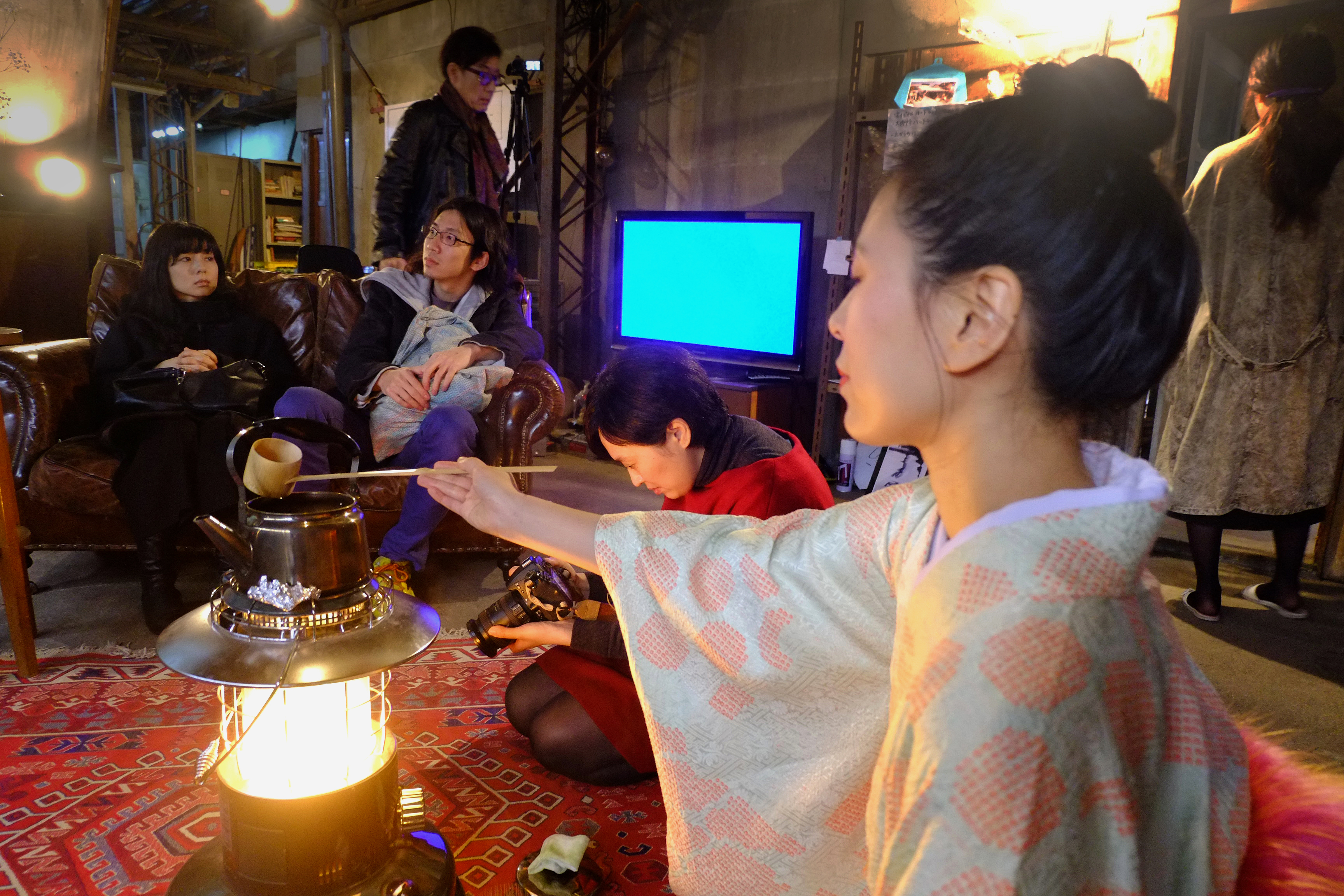In Japan — especially in Japan — food and drink have always been about more than merely nutrition or a mere succession of tastes. They have also been a pretext for bringing people together in social rituals that don't have to be ancient, formal or solemn: rituals focused on food and drink can also be fresh, inventive and humorous.
On Valentine's Day I cycled down to an industrial building in Tengachaya, a maze-like working-class neighborhood in the middle of Osaka's Nishinari Ward, one of the poorest areas in the city and the country. I had been invited to a tea ceremony presided over by the artist-turned-tea mistress, Mai Ueda. For almost a decade, Ueda has been conducting tea ceremonies in unlikely places: on a traffic island in the middle of a busy New York street, inside a mosquito net at an Indian biennial or next to a geyser in Iceland.
The venue, Poehum (the name combines the word "poetry" with "humming"), is a two-story corrugated iron warehouse converted into artists' studios, a gallery and an event space. Shotaro Ikeda, the artist who runs Poehum, told me that his grandparents operated a cracker factory here during the Showa Era (1926-89), producing and packaging handmade okaki (rice crackers). The building now hosts installations and video projections — for instance, Shoji Funakawa (known as "Funasho") has installed a hot electric coil in a darkened room, and hands visitors big blocks of ice to place on it. The ice sizzles satisfyingly as it sinks through the coils.


















With your current subscription plan you can comment on stories. However, before writing your first comment, please create a display name in the Profile section of your subscriber account page.